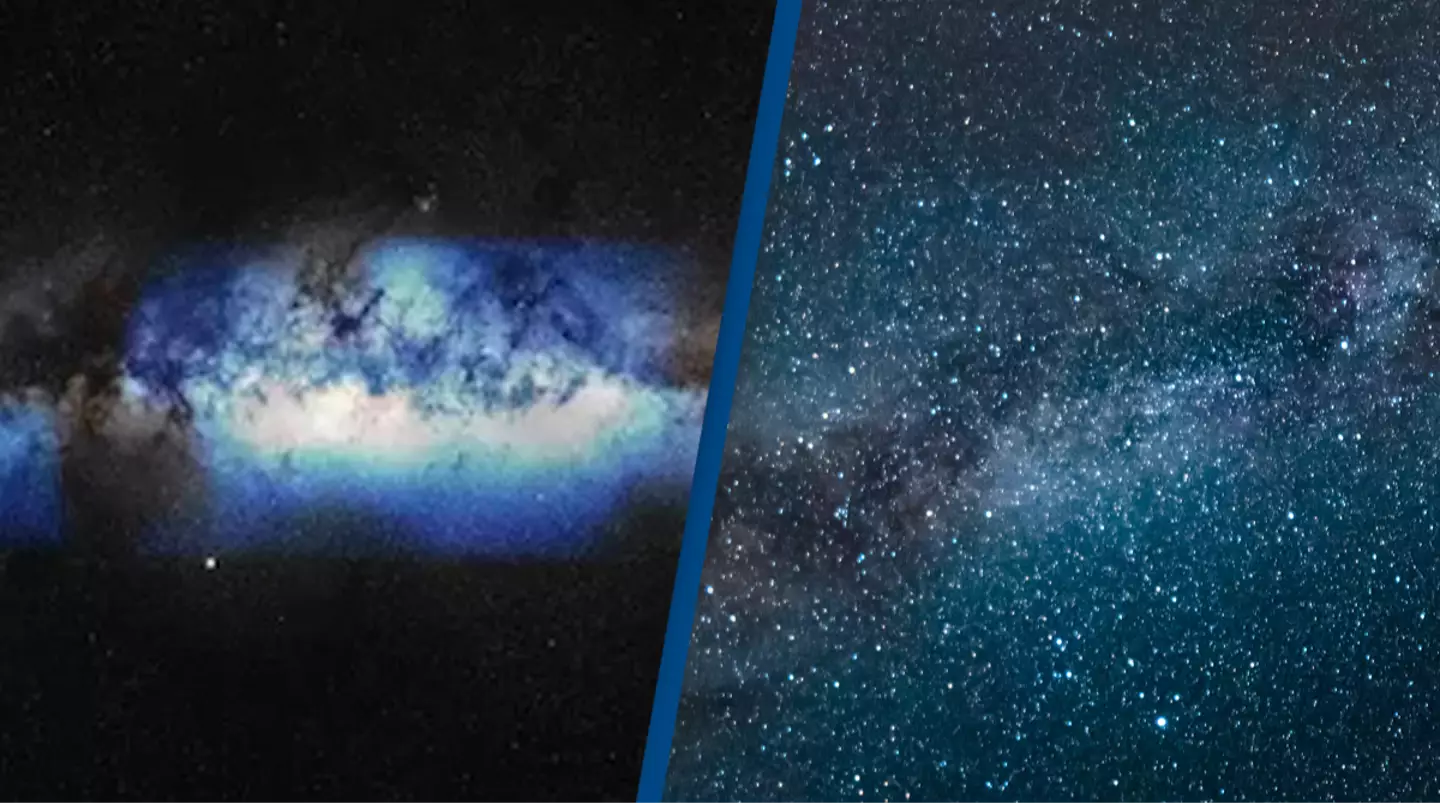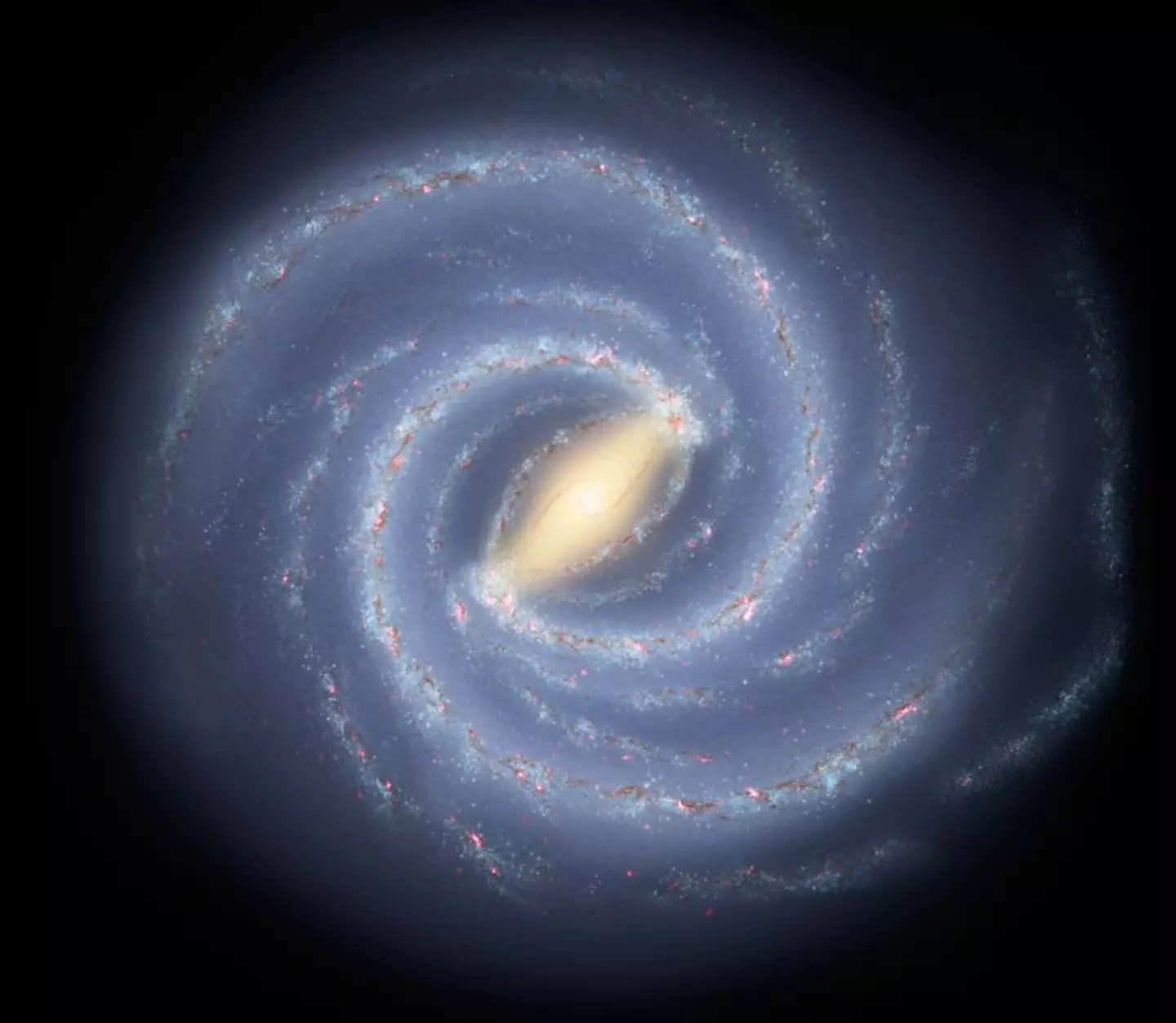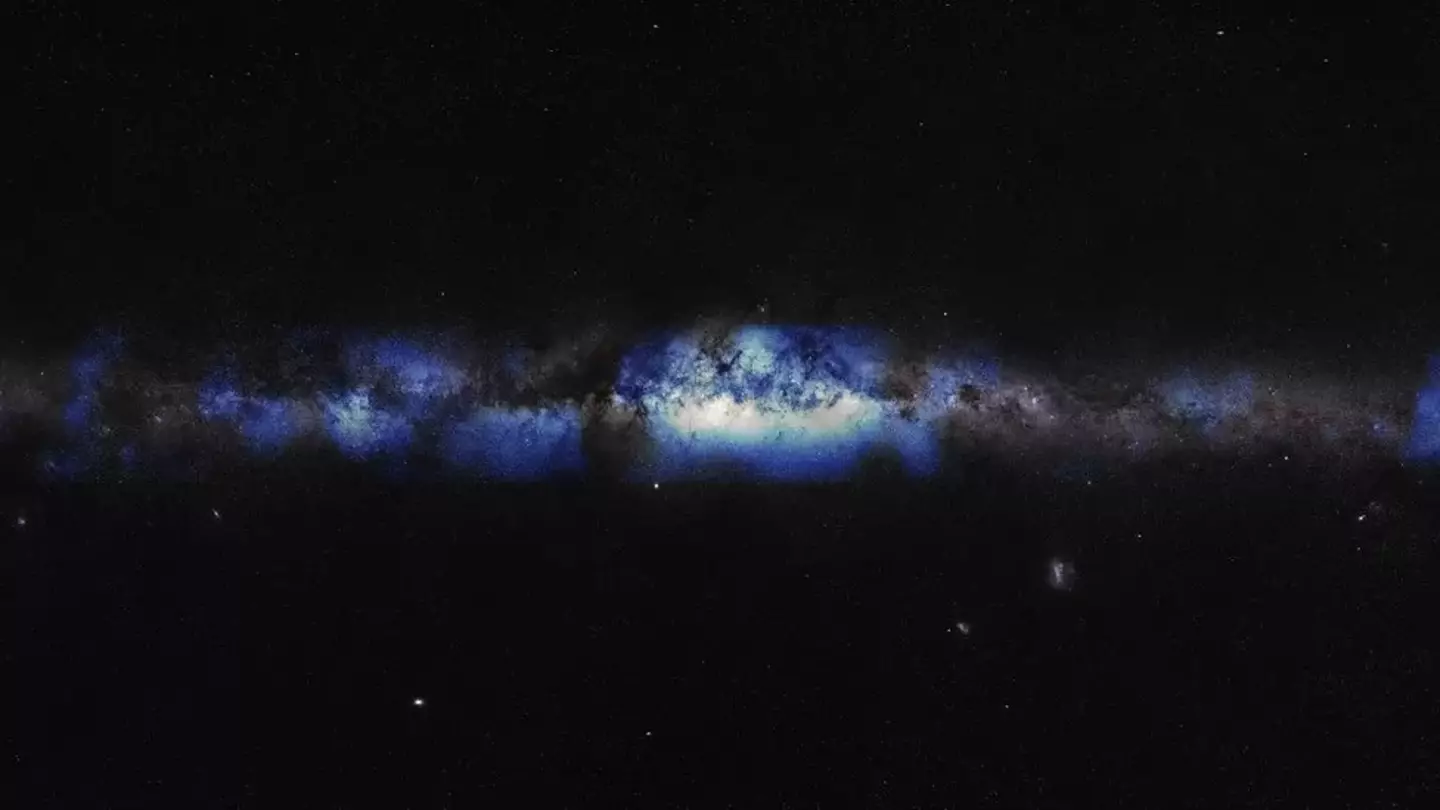

Everyone is familiar with the infamous swirly images of our Milky Way galaxy, but now a team of researchers have given us a view of the galaxy that's never been seen before.
It's been a century since astronomer Edwin Hubble discovered that the Milky Way wasn't alone up there and that there were in fact millions of galaxies in space - meaning we really are just a spec in the sand of our universe.
Our home galaxy has remained a point of fascination in the science community ever since, and now, researchers have shown us it in a whole new way.
Advert


Last month, the team released a new image of the Milky Way - and you probably won't recognise it.
That's because the image was captured with neutrinos, otherwise known as 'ghost particles'.
The particles are really hard to be able to detect from Earth, meaning scientists incredibly turned a large block of Antarctic ice into a detector to pick up on them.
Advert
The detector - aptly called IceCube - is made up of thousands of sensors along massive cables that are drilled and frozen into a 1km block of ice.
"This is the first time we're seeing our Galaxy using particles rather than photons [of light]," Prof Subir Sarkar from the University of Oxford told the BBC.


"The neutrino is a ghostly particle; it's basically almost without mass," he added.
Advert
"They're essentially moving at the speed of light and might pass through the Galaxy and not interact with anything. That is why, in order to see them, you need a massive detector."
The bright spots that you can see in the snap are the areas where the ghost particles are being emitted from, and interestingly, these are different from visible lightwaves.
Francis Halzen, a physicist at the University of Wisconsin–Madison and principal investigator at IceCube, explained: "What’s intriguing is that, unlike the case for light of any wavelength, in neutrinos, the universe outshines the nearby sources in our own galaxy."
Denise Caldwell, director of the Physics Division at The National Science Foundation, added: "As is so often the case, significant breakthroughs in science are enabled by advances in technology. The capabilities provided by the highly sensitive IceCube detector, coupled with new data analysis tools, have given us an entirely new view of our galaxy, one that had only been hinted at before.
Advert
"As these capabilities continue to be refined, we can look forward to watching this picture emerge with ever-increasing resolution, potentially revealing hidden features of our galaxy never before seen by humanity."
The breakthrough discovery has been published in the journal Science and opens up a whole new window of study for our little corner of space, with scientists hoping to spend the next five to ten years attempting to answer what 'we can finally ask'.